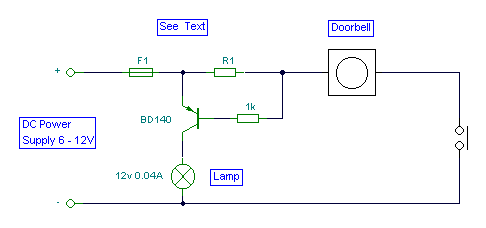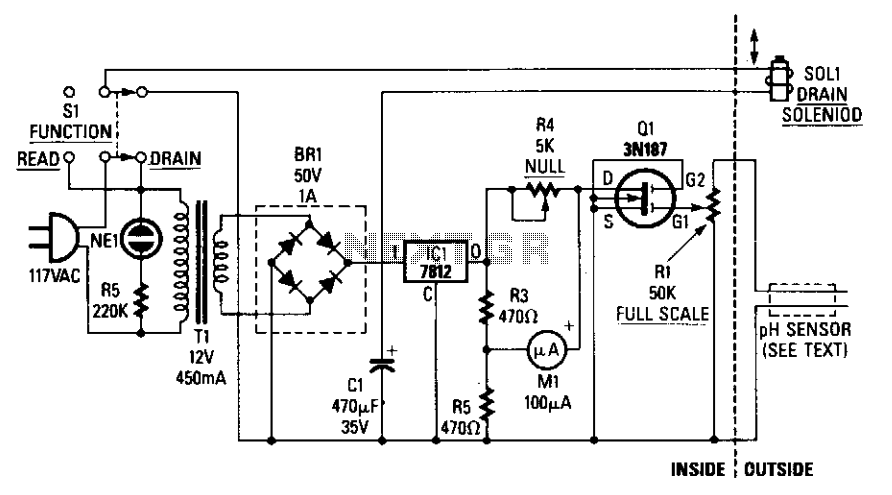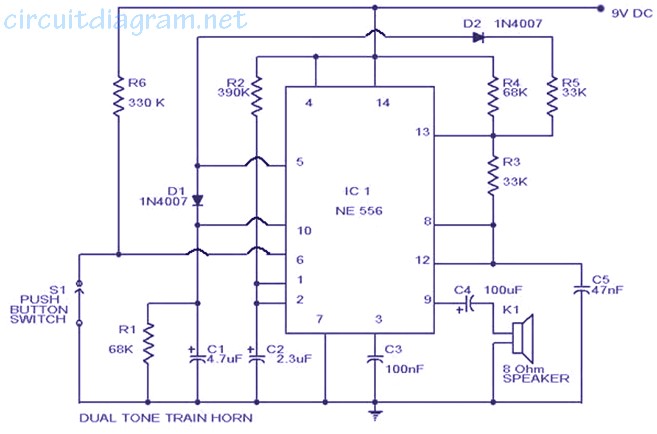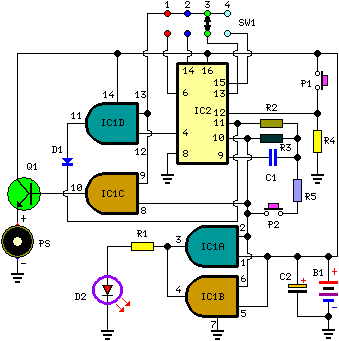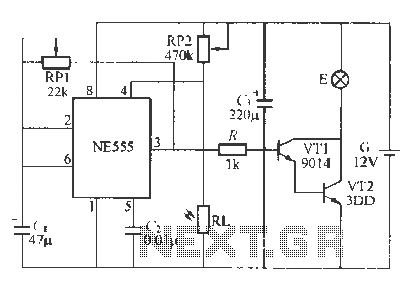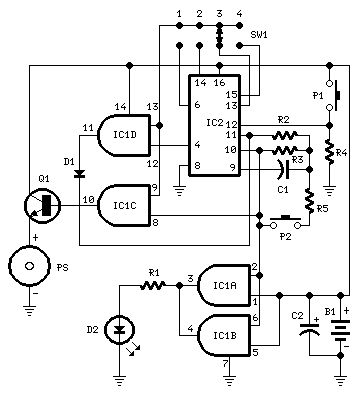
Rain warning beeper
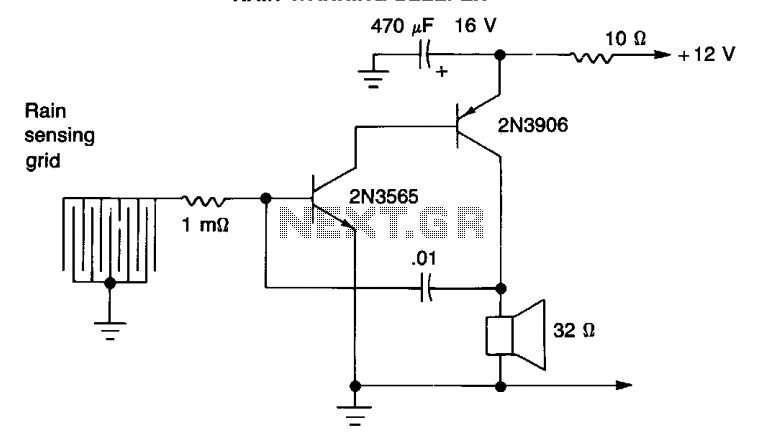
A single drop of rain on the sensing pad of this bleeper initiates an audio warning. Additionally, it can be activated by rising water levels. The circuit incorporates two transistors and features feedback through capacitor C1; however, transistor Tr1 remains inactive while the moisture sensing pad is dry. When the pad becomes conductive, transistors Tr1 and Tr2 create an audio oscillatory circuit, with the pitch influenced by the resistance.
The described circuit functions as a simple moisture detection system that translates the presence of water into an audible alert. The sensing pad is designed to detect moisture, which serves as the trigger for the circuit's operation. The use of two transistors, Tr1 and Tr2, allows for the creation of an oscillating audio signal that can be heard as a warning sound.
In the inactive state, when the sensing pad is dry, transistor Tr1 does not conduct, preventing any operation of the audio output. Once moisture makes contact with the sensing pad, it alters the electrical characteristics, leading to the conduction of Tr1. This change initiates a feedback loop through capacitor C1, which is critical for maintaining the oscillation of the circuit.
Transistor Tr2 works in conjunction with Tr1 to form an audio oscillator. The frequency of the oscillation, and consequently the pitch of the sound produced, is determined by the resistance in the circuit. This resistance can be influenced by various factors, including the size of the moisture detected and the characteristics of the components used.
The design is straightforward yet effective, making it suitable for applications where moisture detection is needed, such as in flood warning systems or as a simple alert mechanism in various electronic devices. The incorporation of transistors allows for reliable operation and the generation of a clear audio signal, which can be easily heard in the environment where the device is deployed.One small spot of rain on the sense pad of this bleeper will start this audio warning. It can also be operated by rising water. The circuit has two transistors, with feedback via capacitor Cl, but Trl cannot operate as long as the moisture sense pad is dry. When the pad conducts, Trl and Tr2 form an audio oscillatory circuit, the pitch depends somewhat on the resistance.
The described circuit functions as a simple moisture detection system that translates the presence of water into an audible alert. The sensing pad is designed to detect moisture, which serves as the trigger for the circuit's operation. The use of two transistors, Tr1 and Tr2, allows for the creation of an oscillating audio signal that can be heard as a warning sound.
In the inactive state, when the sensing pad is dry, transistor Tr1 does not conduct, preventing any operation of the audio output. Once moisture makes contact with the sensing pad, it alters the electrical characteristics, leading to the conduction of Tr1. This change initiates a feedback loop through capacitor C1, which is critical for maintaining the oscillation of the circuit.
Transistor Tr2 works in conjunction with Tr1 to form an audio oscillator. The frequency of the oscillation, and consequently the pitch of the sound produced, is determined by the resistance in the circuit. This resistance can be influenced by various factors, including the size of the moisture detected and the characteristics of the components used.
The design is straightforward yet effective, making it suitable for applications where moisture detection is needed, such as in flood warning systems or as a simple alert mechanism in various electronic devices. The incorporation of transistors allows for reliable operation and the generation of a clear audio signal, which can be easily heard in the environment where the device is deployed.One small spot of rain on the sense pad of this bleeper will start this audio warning. It can also be operated by rising water. The circuit has two transistors, with feedback via capacitor Cl, but Trl cannot operate as long as the moisture sense pad is dry. When the pad conducts, Trl and Tr2 form an audio oscillatory circuit, the pitch depends somewhat on the resistance.
